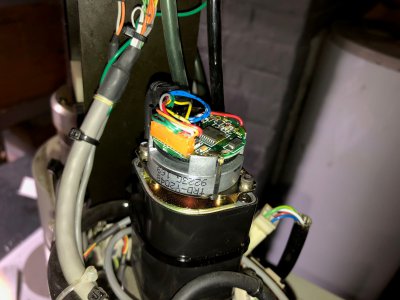- Joined
- Mar 26, 2018
- Messages
- 2,724
Called Yaskawa to talk about their motors and was very pleased with their technical support. The "SU" in the motor catalog number indicates a Seiko proprietary catalog number which prevents Yaskawa from providing me any information on the motor even though the robot and series of motors are no longer manufactured or supported. This is pretty common in industry to prevent an end user from trying to find a cheaper replacement part by going direct to the manufacturer.
I am fairly confident that electrically the motors are identical to their normal counterparts without the "SU" in their catalog string. I hope that any differences are limited to shaft size, paint color, or something else that doesn't affect what I am trying to accomplish. This may also have allowed Seiko to specify the type of connector on the end of the cable to make integration easier for them into the robot.
According to their support engineer the encoders do not have any commutation signals and were painstakingly aligned to the motor electrical angle at the factory using an oscilloscope. Unfortunately this doesn't answer all my questions because the motor would need to rotate until it found the "z" index pulse to know where it was. The engineer told me he didn't know how exactly it worked, but it certainly did not need to move at startup. It is looking more and more like I will need to use commutation self sensing (if my drive supports it) or replace the encoder.
I am fairly confident that electrically the motors are identical to their normal counterparts without the "SU" in their catalog string. I hope that any differences are limited to shaft size, paint color, or something else that doesn't affect what I am trying to accomplish. This may also have allowed Seiko to specify the type of connector on the end of the cable to make integration easier for them into the robot.
According to their support engineer the encoders do not have any commutation signals and were painstakingly aligned to the motor electrical angle at the factory using an oscilloscope. Unfortunately this doesn't answer all my questions because the motor would need to rotate until it found the "z" index pulse to know where it was. The engineer told me he didn't know how exactly it worked, but it certainly did not need to move at startup. It is looking more and more like I will need to use commutation self sensing (if my drive supports it) or replace the encoder.


